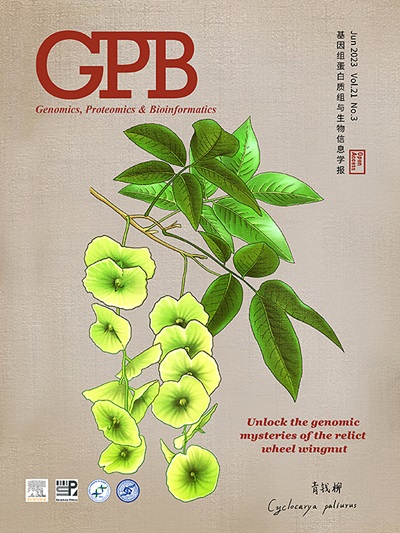The Proteome Landscape of Human Placentas for Monochorionic Twins with Selective Intrauterine Growth Restriction
IF 7.9
2区 生物学
Q1 GENETICS & HEREDITY
引用次数: 0
Abstract
In perinatal medicine, intrauterine growth restriction (IUGR) is one of the greatest challenges. The etiology of IUGR is multifactorial, but most cases are thought to arise from placental insufficiency. However, identifying the placental cause of IUGR can be difficult due to numerous confounding factors. Selective IUGR (sIUGR) would be a good model to investigate how impaired placentation affects fetal development, as the growth discordance between monochorionic twins cannot be explained by confounding genetic or maternal factors. Herein, we constructed and analyzed the placental proteomic profiles of IUGR twins and normal cotwins. Specifically, we identified a total of 5481 proteins, of which 233 were differentially expressed (57 up-regulated and 176 down-regulated) in IUGR twins. Bioinformatics analysis indicates that these differentially expressed proteins (DEPs) are mainly associated with cardiovascular system development and function, organismal survival, and organismal development. Notably, 34 DEPs are significantly enriched in angiogenesis, and diminished placental angiogenesis in IUGR twins has been further elaborately confirmed. Moreover, we found decreased expression of metadherin (MTDH) in the placentas of IUGR twins and demonstrated that MTDH contributes to placental angiogenesis and fetal growth in vitro. Collectively, our findings reveal the comprehensive proteomic signatures of placentas for sIUGR twins, and the DEPs identified may provide in-depth insights into the pathogenesis of placental dysfunction and subsequent impaired fetal growth.
选择性宫内生长受限的单绒毛膜双胎人类胎盘的蛋白质组图谱
在围产医学中,宫内生长受限(IUGR)是最大的挑战之一。IUGR 的病因是多方面的,但大多数病例被认为是由胎盘功能不全引起的。然而,由于混杂因素较多,确定 IUGR 的胎盘病因可能比较困难。选择性 IUGR(sIUGR)是研究胎盘功能受损如何影响胎儿发育的一个很好的模型,因为单绒毛膜双胎之间的生长不一致无法用遗传或母体因素来解释。在此,我们构建并分析了IUGR双胞胎和正常同胎双胞胎的胎盘蛋白质组图谱。具体来说,我们共鉴定出5481个蛋白质,其中233个蛋白质在IUGR双胞胎中存在差异表达(57个上调,176个下调)。生物信息学分析表明,这些差异表达蛋白(DEPs)主要与心血管系统发育和功能、机体存活和机体发育有关。值得注意的是,34 个 DEPs 在血管生成中明显富集,而 IUGR 双胞胎胎盘血管生成的减少也得到了进一步的详细证实。此外,我们还发现IUGR双胞胎胎盘中的偏粘连蛋白(MTDH)表达减少,并证明MTDH有助于胎盘血管生成和胎儿体外生长。总之,我们的研究结果揭示了sIUGR双胞胎胎盘的综合蛋白质组特征,所发现的DEPs可能会为胎盘功能障碍及随后的胎儿生长受损的发病机制提供深入的见解。
本文章由计算机程序翻译,如有差异,请以英文原文为准。
求助全文
约1分钟内获得全文
求助全文
来源期刊

Genomics, Proteomics & Bioinformatics
Biochemistry, Genetics and Molecular Biology-Biochemistry
CiteScore
14.30
自引率
4.20%
发文量
844
审稿时长
61 days
期刊介绍:
Genomics, Proteomics and Bioinformatics (GPB) is the official journal of the Beijing Institute of Genomics, Chinese Academy of Sciences / China National Center for Bioinformation and Genetics Society of China. It aims to disseminate new developments in the field of omics and bioinformatics, publish high-quality discoveries quickly, and promote open access and online publication. GPB welcomes submissions in all areas of life science, biology, and biomedicine, with a focus on large data acquisition, analysis, and curation. Manuscripts covering omics and related bioinformatics topics are particularly encouraged. GPB is indexed/abstracted by PubMed/MEDLINE, PubMed Central, Scopus, BIOSIS Previews, Chemical Abstracts, CSCD, among others.
 求助内容:
求助内容: 应助结果提醒方式:
应助结果提醒方式:


